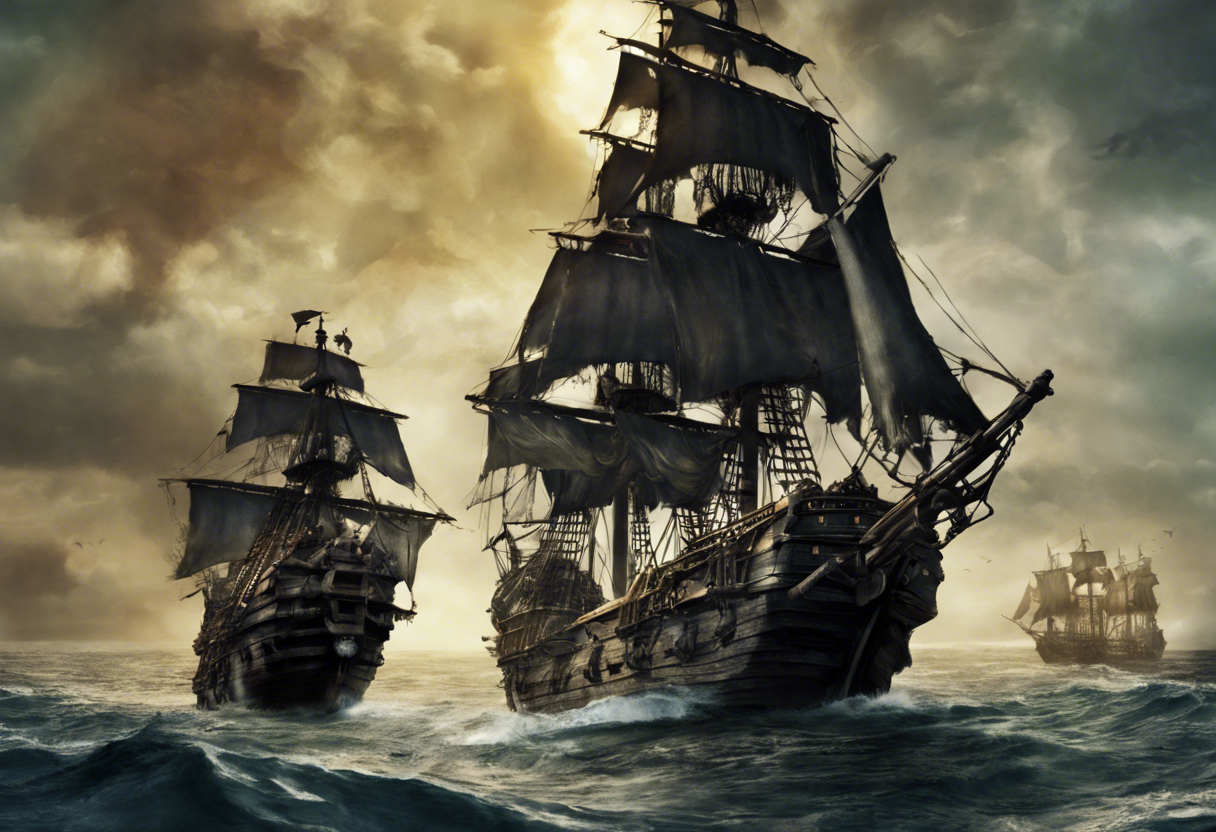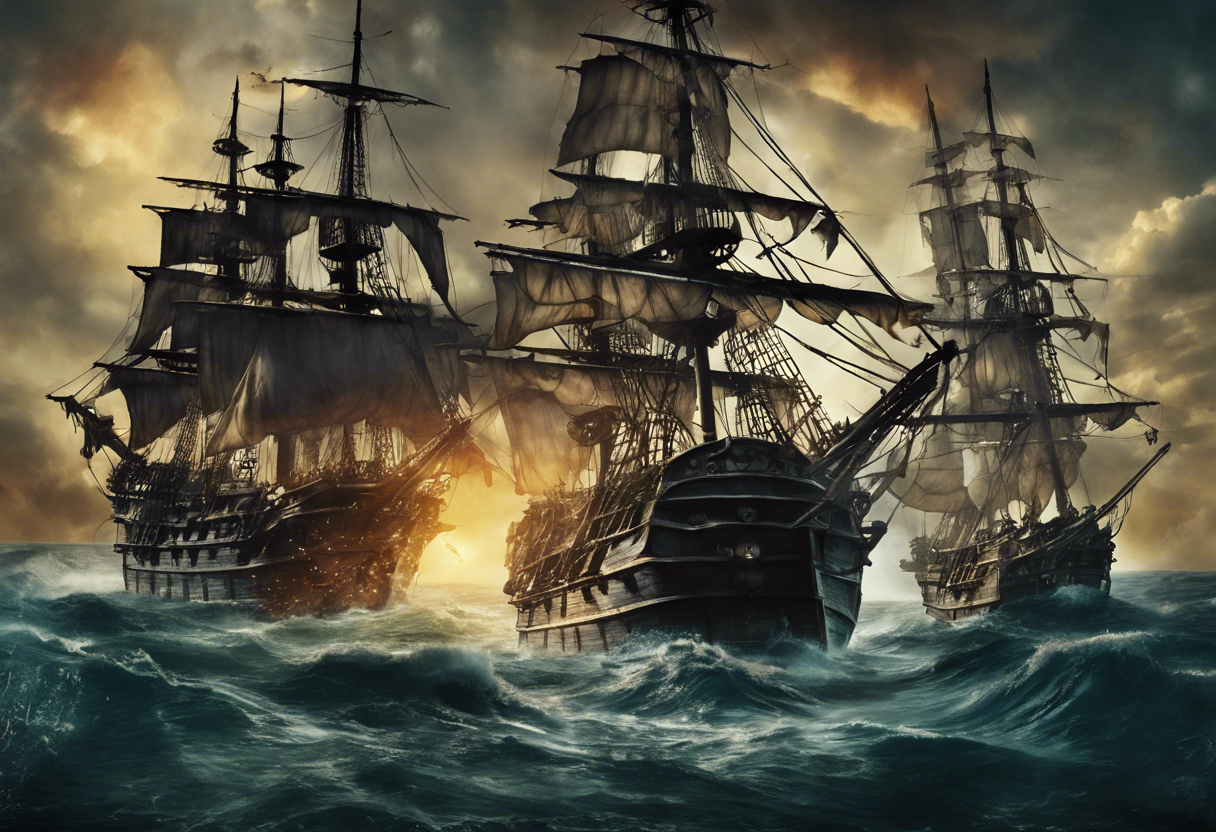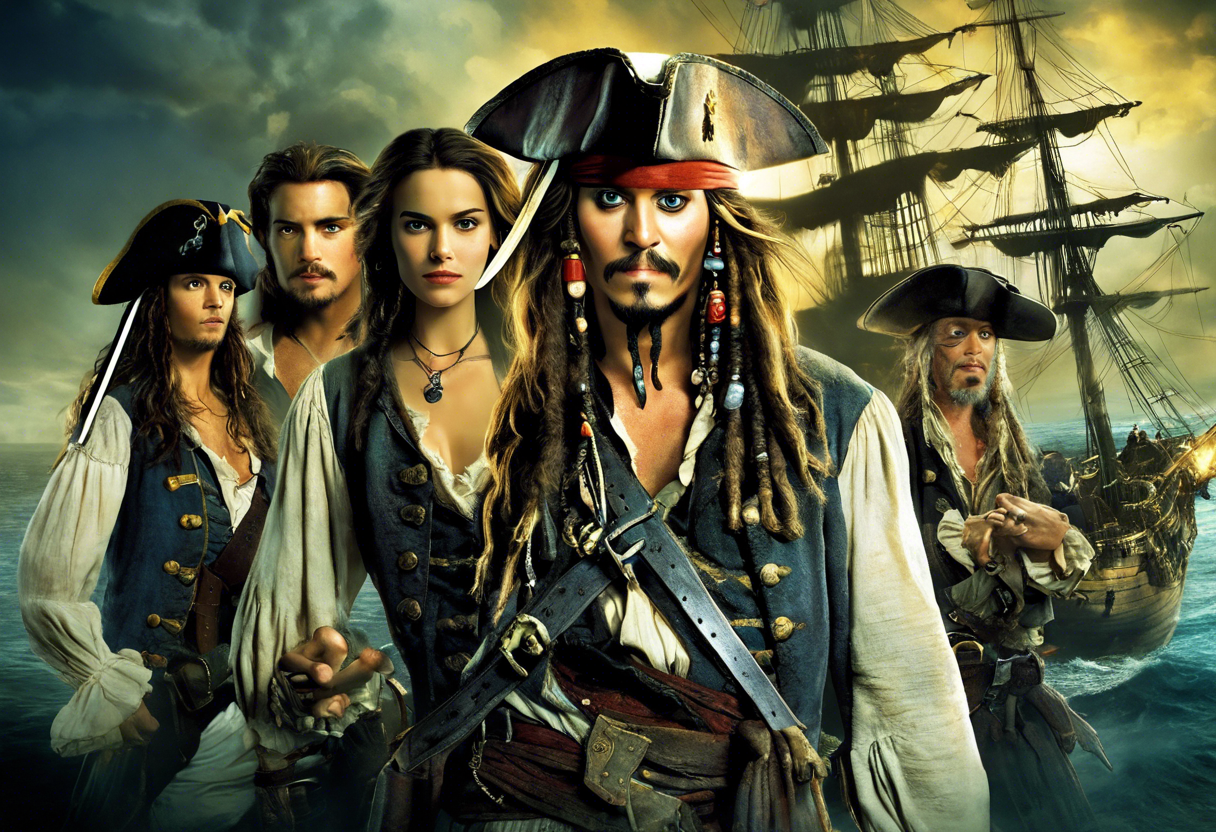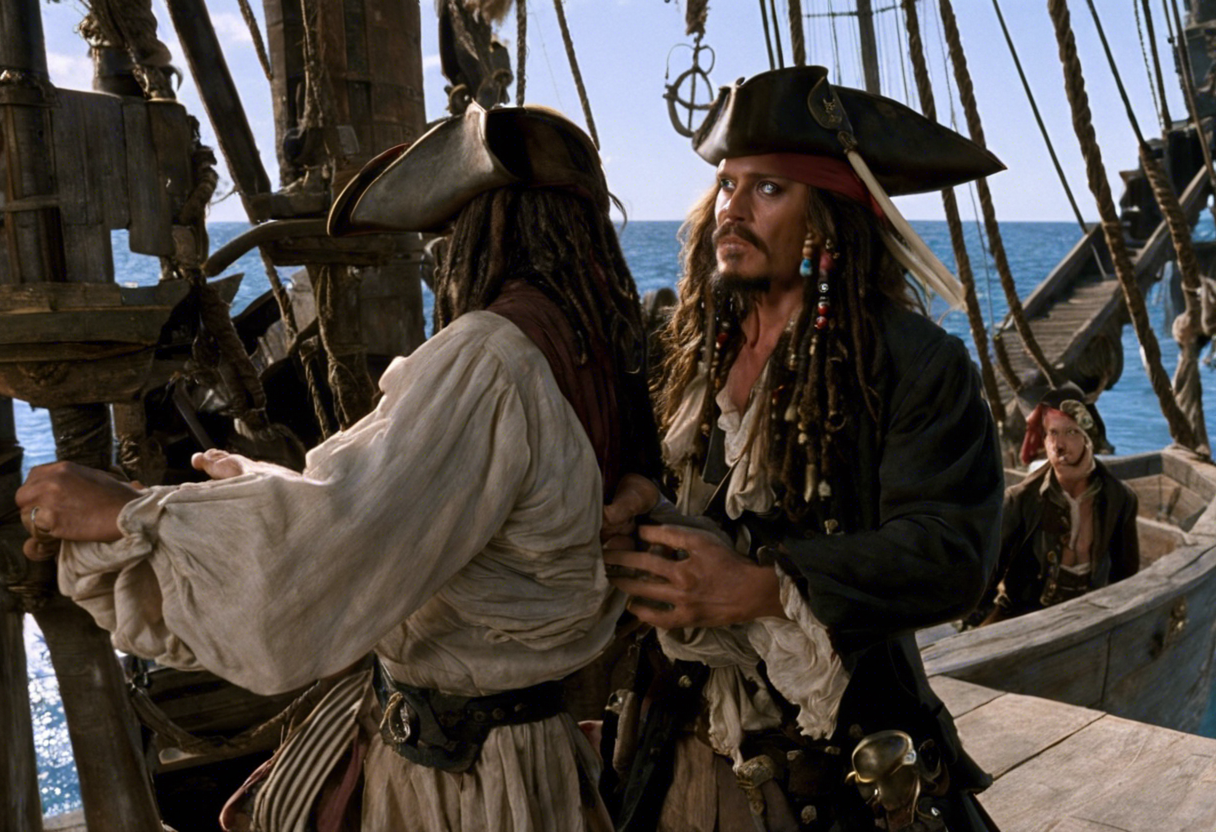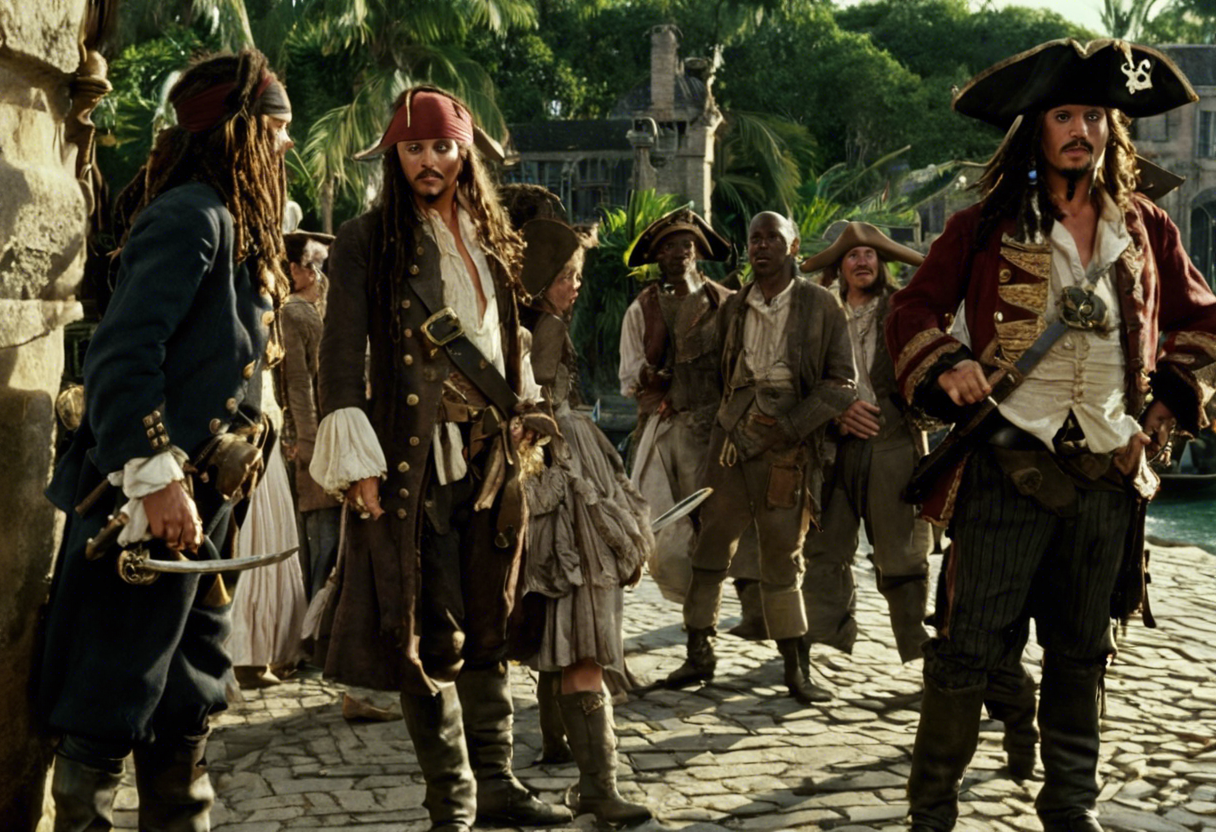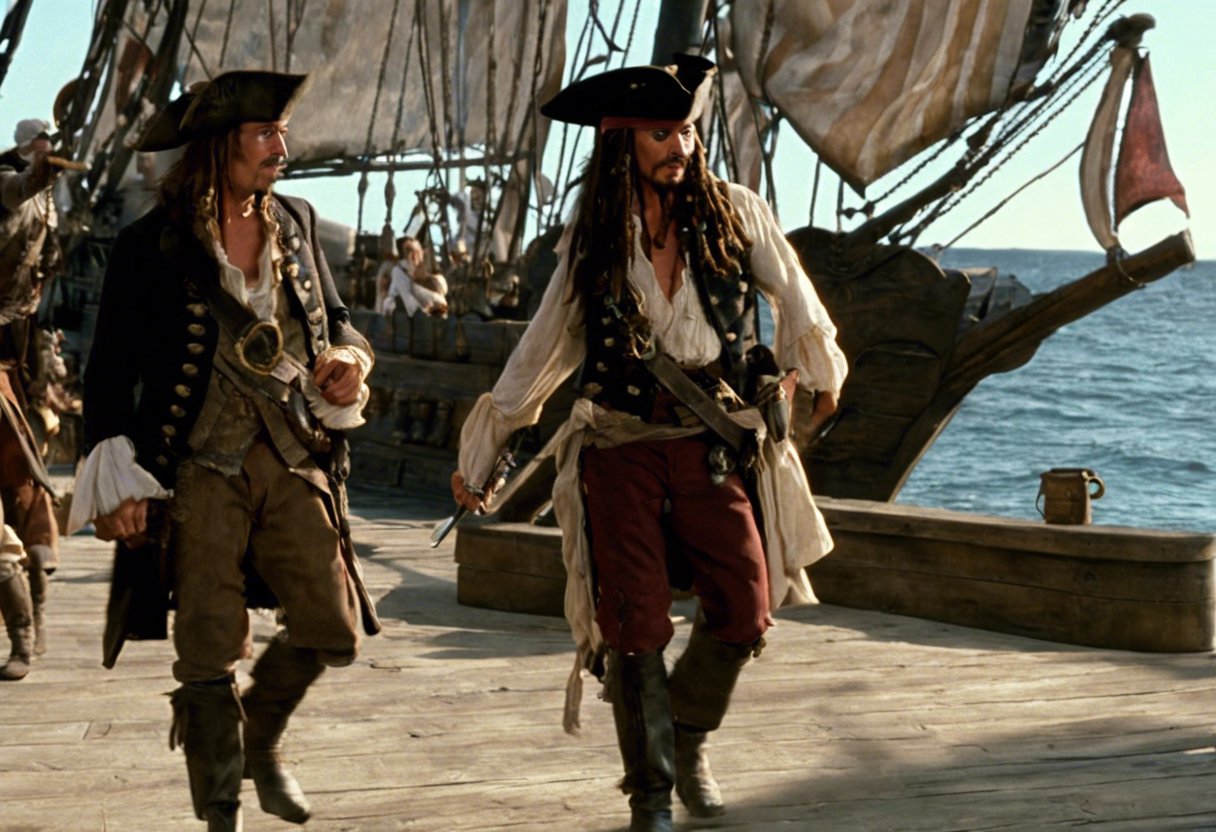Contents
Introduction
Pirates of the Caribbean: The Curse of the Black Pearl, released in 2003, is a fantasy historical film that marked the beginning of the highly successful Pirates of the Caribbean franchise. Directed by Gore Verbinski and produced by Jerry Bruckheimer, the film is based on the theme park attraction of the same name at Disneyland. The screenplay was written by Ted Elliott and Terry Rossio, with additional credits to Stuart Beattie and Jay Wolpert.
The production of The Curse of the Black Pearl was met with initial skepticism, given its origins from a theme park ride. However, the collaboration between the creative team and the cast, including Johnny Depp as Captain Jack Sparrow, Orlando Bloom as Will Turner, and Keira Knightley as Elizabeth Swann, transformed the project into a cinematic masterpiece. The film’s success can be attributed to its unique blend of classic storytelling, supernatural elements, and the meticulous attention to historical sailing details, which set it apart within its genre.
Upon its release, The Curse of the Black Pearl grossed $654.3 million worldwide, making it one of the most successful films of 2003 [5]. This financial success, combined with its critical acclaim, solidified the film’s place as a landmark in modern cinema.
Plot Summary
The plot of Pirates of the Caribbean: The Curse of the Black Pearl unfolds in the early 18th century. The story begins with Governor Weatherby Swann and his daughter, Elizabeth, sailing aboard the HMS Dauntless. During their voyage, they rescue a young boy named Will Turner, who is found with a gold medallion around his neck. Elizabeth takes the medallion, and eight years later, the story shifts to Port Royal, Jamaica, where Will has grown into a blacksmith and Elizabeth is preparing for her life as a noblewoman.
The narrative takes a dramatic turn with the arrival of Captain Jack Sparrow in Port Royal. Jack’s ship, the Black Pearl, has been stolen by his mutinous first mate, Captain Barbossa. The Black Pearl and its crew, now cursed by Aztec gold, attack Port Royal in search of the medallion, which Elizabeth possesses. The curse, placed by the Aztec gods due to the greed of Hernán Cortés, renders the pirates immortal but undead, transforming them into skeletons in the moonlight.
Will and Elizabeth form an unlikely alliance with Jack to rescue Elizabeth from the clutches of Barbossa and to break the curse. The journey takes them to Isla de Muerta, where the treasure of Cortés is hidden. Here, they discover that the curse can only be lifted by returning all the gold pieces and making an offering of blood from each member of the crew. The key to breaking the curse lies in the blood of “Bootstrap Bill” Turner, Will’s father, who had given one of the gold pieces to his son before being lost at sea.
As the story progresses, Will and Elizabeth find themselves in various perilous situations, including being marooned on an island and engaging in a naval battle between the Black Pearl and the Interceptor. The climax of the film involves a final confrontation at Isla de Muerta, where Will, Jack, and Elizabeth work together to defeat Barbossa and his crew, ultimately lifting the curse and restoring the pirates to their mortal form [2].
Themes and Symbolism
Pirates of the Caribbean: The Curse of the Black Pearl is rich in themes and symbolic elements that enhance its storytelling and resonate deeply with audiences. One of the central themes is the quest for freedom, exemplified through the characters of Jack Sparrow, Elizabeth Swann, and Will Turner. Jack’s surname, derived from the sparrow bird, symbolizes his desire for freedom and his ability to navigate through challenging situations [3].
Elizabeth Swann’s character is also symbolic, with her surname reflecting the swan, a bird known for its beauty and ferocity. Her journey from a constricted life under her father’s rule to one of independence and self-discovery is a powerful metaphor for breaking free from societal constraints. The corset she wears early in the film serves as a physical and metaphorical representation of her stifled life, highlighting her longing for freedom and autonomy [3].
The Black Pearl itself is a symbol of infinite value and the elusive nature of desire. Jack’s relentless pursuit of the ship mirrors the human quest for something that seems always just out of reach. The magical compass that points towards one’s true desire is another symbolic element, illustrating the characters’ deep-seated yearnings and the complexities of their motivations [3].
The curse of the Aztec gold is a metaphor for the consequences of greed and the corrupting influence of power. The transformation of the pirates into undead skeletons underscores the theme of the cost of immortality and the importance of mortality in giving life its value.
Cultural Impact
Pirates of the Caribbean: The Curse of the Black Pearl had a profound cultural impact upon its release. The film’s success was not limited to its box office performance; it also influenced popular culture in significant ways. Johnny Depp’s portrayal of Captain Jack Sparrow became an iconic character, with “Savvy” and other catchphrases becoming household words. The film’s influence extended to fashion, with pirate-themed costumes becoming popular for Halloween and other events [4].
The film’s cultural significance is also evident in its impact on the film industry. It revitalized the pirate genre and paved the way for a successful franchise that has grossed over $4.5 billion worldwide. The Pirates of the Caribbean franchise is now listed as the 10th highest-grossing film franchise of all time [5].
Critical Reception
Pirates of the Caribbean: The Curse of the Black Pearl received widespread critical acclaim upon its release. Critics praised the film’s unique blend of action, adventure, and supernatural elements, as well as the performances of the cast, particularly Johnny Depp’s eccentric and charismatic portrayal of Jack Sparrow.
The film holds a high rating on various review platforms, with many praising its storytelling, visual effects, and the chemistry between the lead actors. However, some critics noted that the film’s pacing could be uneven and that the plot was somewhat predictable. Despite these minor criticisms, the film was generally well-received and is often cited as one of the best films of 2003.
In subsequent years, the film has continued to be celebrated for its originality and its contribution to the revival of the pirate genre. It has been recognized as a landmark film in the fantasy adventure genre and continues to be enjoyed by audiences around the world.
Legacy
Pirates of the Caribbean: The Curse of the Black Pearl has left an enduring legacy in cinematic history. It not only launched a successful franchise but also influenced a generation of filmmakers and audiences. The film’s success can be seen in its ability to blend historical accuracy with fantastical elements, creating a unique and captivating narrative.
The character of Captain Jack Sparrow, in particular, has become an iconic figure in popular culture, inspiring countless imitations and references in other media. The film’s impact on the film industry is evident in the numerous pirate-themed films and TV shows that followed in its wake.
The Pirates of the Caribbean franchise continues to evolve, with new films and adaptations being developed. However, The Curse of the Black Pearl remains the cornerstone of the franchise, a film that set the standard for all subsequent entries and continues to be celebrated for its innovative storytelling, memorable characters, and its lasting impact on popular culture.
References
- https://www.imdb.com/title/tt0325980/plotsummary/
- https://en.wikipedia.org/wiki/Pirates_of_the_Caribbean:_The_Curse_of_the_Black_Pearl
- https://www.youtube.com/watch?v=Wt6luHwso7E
- https://collider.com/pirates-of-the-caribbean-the-curse-of-the-black-pearl-20th-anniversary/
- https://www.arcstudiopro.com/blog/breaking-down-pirates-of-the-caribbean-the-curse-of-the-black-pearl

